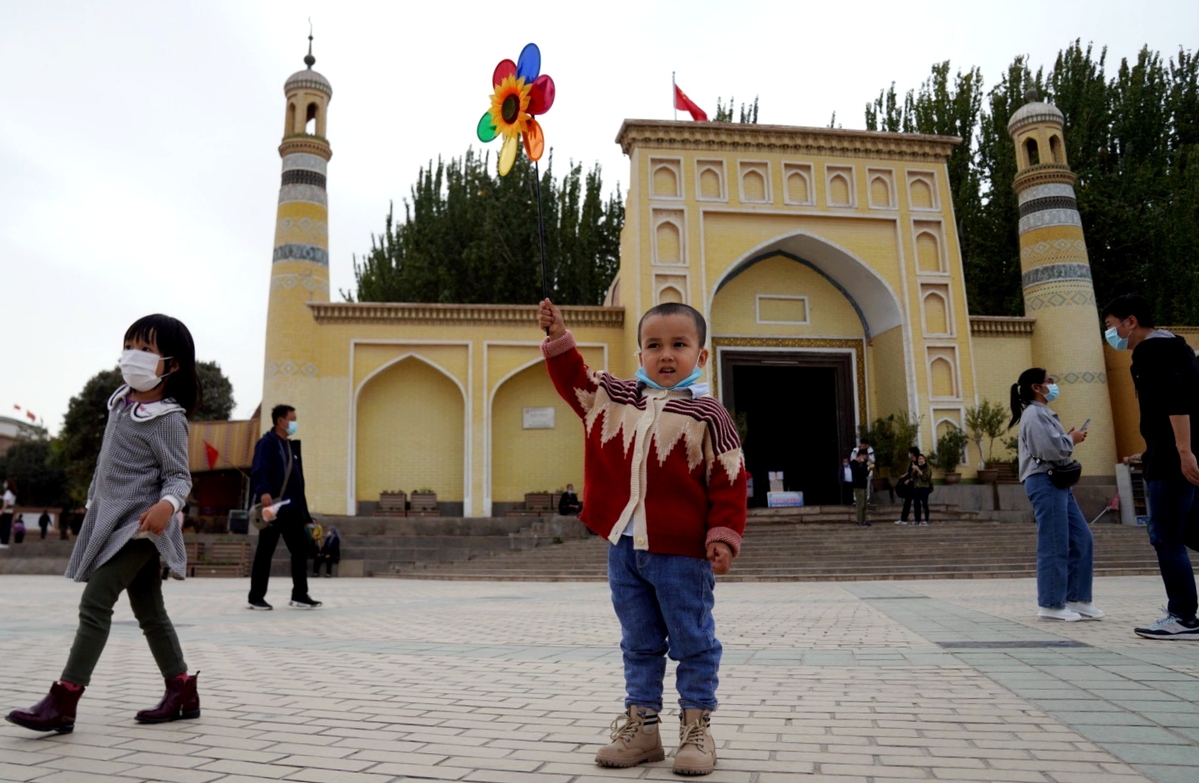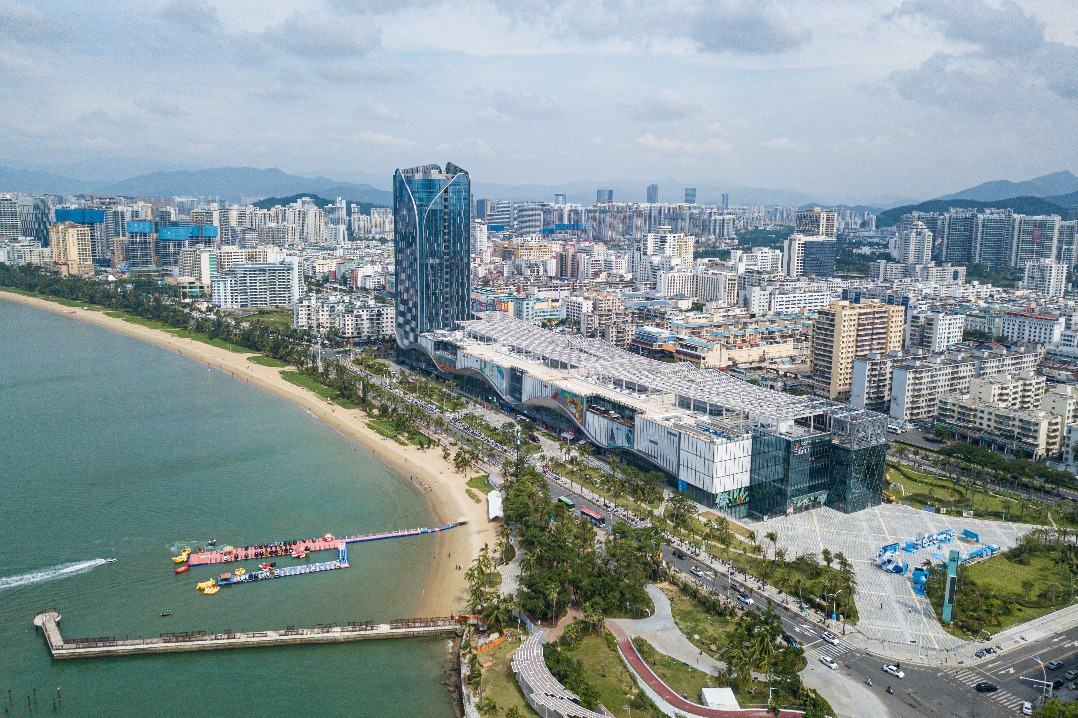Renovation work gives mosques modern touch


Safety improved at religious venues in Xinjiang
Like many devout Muslims in the Xinjiang Uygur autonomous region, members of Metkurban Metsedi's family have worshipped at a mosque near their home for generations.
Praying at the Id Kah Mosque in Yutian county, Hotan prefecture, is an essential part of the 49-year-old's life, so he was puzzled when he heard reports that the building had been demolished.
"My grandfather and father both prayed at the mosque, and I grew up living near to it. It is in good condition, and, after renovation work, it is definitely still in use," he said.
"I have no idea why some people would say it has been demolished. If they really care about us, why not pay us a visit in person to see the truth for themselves?"
After the mosque, which has a history of more than 800 years, was listed as a key national cultural relics site in May 2013, efforts were made to renovate it, he added.
However, according to the 2019 Report on International Religious Freedom published by United States Department of State, the authorities in Xinjiang demolished the Id Kah Mosque and Jiami Mosque in Yecheng county, Kashgar prefecture, the previous year.
Some Western media outlets also constantly falsely accuse China of trying to eradicate Islam in the region by pulling down mosques.
On July 31, Liu Xiaoming, China's ambassador to the United Kingdom, said in an online news conference from London that the allegation that a large number of mosques in Xinjiang had been demolished was "nothing but a lie".
"The Jiami Mosque in Yecheng and the Id Kah Mosque in Yutian, which it was claimed had been dismantled, were in fact renovated and put to use again.
"Those who cooked up the lies used photos of the old, dilapidated mosques to support their lies, but I will refute their lies with photos of the new, renovated mosques," Liu said.
There are some 24,400 mosques in Xinjiang-one for every 530 Muslims on average, a higher proportion than in some Islamic countries, Liu said.
Many mosques in the region were built in the 1980s and 1990s or even earlier, but some of these mud-and-brick structures or small buildings were not well maintained or repaired.
They became unsafe for religious activities, especially in harsh weather conditions, and posed a serious threat in the event of an earthquake. The mosques were also inadequately designed, making worship difficult, the Xinjiang Islamic Association said in a report on Nov 3 on the freedom of religion in the region.
It added that the regional government renovated dilapidated mosques and "made adjustments" to those in a dangerous condition.
The report said the mosques have been improved and modernized to accommodate Muslims' needs. They have been equipped with running water, electricity, natural gas, radio and other communications facilities. Roads leading to mosques have been upgraded to make access easier, and medical and public services have been extended to the venues.
























